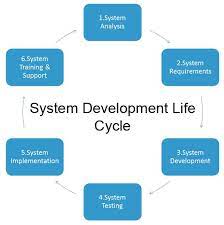System Analysis and Design (SAD) is a process that involves understanding, analyzing, and designing information systems to meet specific business requirements. It encompasses a set of methodologies and techniques used to examine and improve the efficiency, effectiveness, and overall functionality of systems within an organization. Here’s an overview of SAD, including its definition, importance, and objectives:
Definition:
System Analysis and Design refers to the systematic approach of studying, evaluating, and designing information systems to solve business problems or enhance existing systems. It involves understanding the current system, identifying requirements, and proposing solutions to meet those requirements.
Importance:
System Analysis and Design is crucial for organizations because:
- Efficiency and Productivity: SAD helps identify inefficiencies in existing systems and suggests improvements to streamline processes, eliminate redundancies, and optimize resource utilization, thereby increasing efficiency and productivity.
- Accuracy and Reliability: Through proper analysis and design, SAD aims to ensure that information systems deliver accurate and reliable results, minimizing errors and inconsistencies.
- Business Alignment: SAD focuses on aligning information systems with the goals and objectives of the organization. It helps bridge the gap between business requirements and technology solutions, ensuring that systems support strategic initiatives.
- Cost Reduction: By identifying redundancies, eliminating unnecessary processes, and optimizing resource allocation, SAD can lead to cost reductions for the organization.
- Scalability and Flexibility: SAD takes into account future growth and scalability needs. By designing systems with flexibility in mind, organizations can adapt and accommodate changes, new requirements, and emerging technologies more easily.
Objectives:
The primary objectives of System Analysis and Design are:
- Understanding Requirements: SAD aims to understand the business needs, user requirements, and constraints of the existing system to identify areas for improvement.
- Defining System Scope: SAD defines the boundaries and scope of the system to be developed or enhanced to ensure that it meets the required objectives.
- Identifying Solutions: SAD involves identifying potential solutions and evaluating their feasibility, considering factors such as technical feasibility, cost-effectiveness, and alignment with business goals.
- Designing System Architecture: SAD includes designing the overall system architecture, including data structures, user interfaces, and system components, to ensure an efficient and effective solution.
- Implementing and Testing: SAD guides the implementation of the proposed system, including coding, integration, and testing to ensure that it functions as intended and meets user requirements.
- Maintenance and Enhancement: SAD considers the long-term maintenance and enhancement of the system, ensuring that it remains viable, adaptable, and responsive to changing business needs.
Overall, System Analysis and Design is a structured and iterative approach that helps organizations build or improve information systems that effectively support their business processes, enhance productivity, and achieve strategic objectives.
